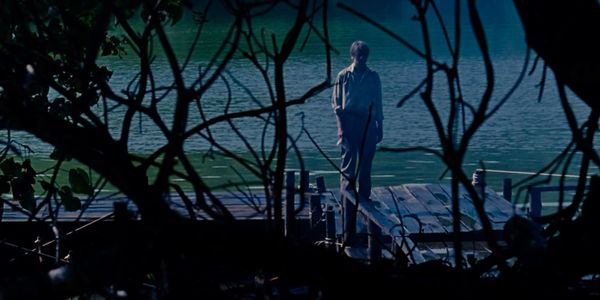Chantal Akerman’s stories all originate from a feeling of entrapment. As a filmmaker of iconic feminist cinema, the entrapment of her characters is discretely shown from the viewpoint of women – namely who feel obligated to positions within contained spaces and roles. In the first half of Akerman’s landmark film Je, tu, il, elle (1974), and nearly the entirety of her even more impressive Jeanne Dielman, women’s roles are disrupted through chance encounters and events which form a pathway to escape. In her documentary films like News From Home (1977) and No Home Movie (2015), she examines her relationship with her mother as a symbol of how women may feel distant, both from other women with whom they could otherwise share solidarity and the general happenings of the world run by men who are free to come and go at their own discretion.
Race is Thicker than Blood
Akerman’s second to last film and her last fictional narrative Almayer’s Folly (2011), threads her familiar examinations of feminist themes through a larger tapestry of colonial histories. A Dutch ex-pat in Malaysia named Almayer (Stanislas Merhar) feels a longing for his mixed-race daughter Nina (Aurora Marion) who is sent off to a girl’s boarding school in France to “become westernized” (read civilized). As she is trapped there, Almayer’s mind descends into turmoil in his river-side villa from both separation anxiety from his daughter and seeing his dreams of wealth and prosperity falling apart before his eyes. Loosely adapted from Joseph Conrad’s novel, Akerman takes a characteristic minimalist approach that diverts from plot to concentrate on psyche and metaphors of imperialism.

Almayer’s Folly moves at the pace of a slow stream and with a palette of blues and greens that work interchangeably to give its Malaysian setting a natural dampness and rich tropical feel and its French interludes an authoritarian coldness. Akerman’s penchant for relaying events in “real-time” (which Akerman refers to waggishly as “my time”) where we are conscious of each minute ticking by helps to exacerbate Almayer’s disquietude. The camera’s slow pans and many static frames give us the sensation of people as distant and immobile and the long silences and awkward glances enhance the notion that despite blood-relation, the settler-colonialist dynamics of Almayer and his daughter muddy the waters to being near irreparable.
Empty and Locked Spaces
A significant choice is made in the movie – none of the sequences of Nina at the school in France show her visage. However, we hear her voice singing out from gloomy blue cement walls. It’s a distinct choice by Akerman who generally locks us in alongside trapped women, making us live their experience. This time, we’re on the outside. It’s a confrontational choice, making the viewer fully aware of their own mobility, access, and power. It also juxtaposes the difference of entrapment from an oppressed and a privileged standpoint.
Almayer is stuck physically in an empty house longing for his daughter but also trapped mentally in his own misery and denial of his dreams collapsing. His entrapment is one of entitlement. It echoes Isabelle Huppert’s character in Claire Denis’s White Material (2009), made just two years earlier. Both characters and their respective movies are fixed and latched onto a colonial history that is dying and they feel entitled to the labor, love, and bondage of those who are under them. Almayer’s longing for his daughter becomes a selfish gesture, one that starts to assume control over her after she comes back to Malaysia hoping to be free and living her own life.
As with imperialist nations and their colonies, there is a constant fear in Almayer that he is losing grasp of Nina, and this increases his violence. Nina on the other hand is a person broken by and from bondage and at the sight of freedom rejects any and all ideas that would end in tying herself down again. Even as a young local man named Daïn (Zac Andrianasolo) shows kindness and love to her, she is steadfast in her refusal to commit.
Conclusion
From her first film – Saut ma Ville (1968), a 13 minute short of a young woman locking herself in an apartment and dismantling every traditional woman’s role as the cook and cleaner – Chantal Akerman has been dedicated to examining the plight of women’s entrapment and the glory of their liberation. It is obviously different for non-white women and the result of Almayer’s Folly is a movie that quietly but forcefully acknowledges Akerman’s feminism as previously limited in a way and now accommodating the racial imbalances with equal space as the gender dynamics.
Almayer’s Folly is available to stream on MUBI Library and the Criterion Channel.
Watch Almayer’s Folly
Does content like this matter to you?
Become a Member and support film journalism. Unlock access to all of Film Inquiry`s great articles. Join a community of like-minded readers who are passionate about cinema - get access to our private members Network, give back to independent filmmakers, and more.